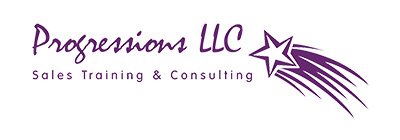Working the Room - The Art of Networking
How many of us attend social functions and not really get as much out of them as we could or should? Seems to me if we are going to devote our time, energy and dollars to attending a social function, we need to go with a plan and purpose to optimize our investment. “Working the room” is one of my most popular programs, as it walks the participants through a process of how to best attend a social function AND follow up effectively afterwards. Working the room is not just about making contacts. It’s about making the best possible contacts. Some may turn into wonderful friends and others influential business associates or new clients. The wider our network and circle of friends the easier our business becomes.
Being approachable is just as important as approaching others. A smile, eye contact and welcoming body language and facial expression are essential. Be confident when you walk into the room and be prepared. Have your business cards handy along with a pen and note pad. Ask open-ended questions, listen intently and look for ways to establish a connection or something in common with those you meet. I will often write a point of interest or something in common on the back of a new person’s card. It’s quite acceptable, and may be regarded as a compliment to say “Do you mind if I take a couple of notes? I want to remember_________ or follow up with you on ________.” People attend social gatherings for similar reasons, typically to network and establish new business clients. Don’t be timid about using this time efficiently yourself.
Good manners equal good business. Act like and be a professional. One of my favorite saying is, “Every day is an interview day!” First impressions are very important, so be sure to dress your best. If you have doubts call and ask the host what the expected dress will be. Extend a warm, gracious and firm handshake and maintain eye contact as you do so. Assume the mindset of a host or hostess and look for opportunities to take a lead role in introducing a new friend to someone else or providing information about the function. Don’t presume informality. Wait until someone refers to themselves in a shortened name, such as “you can call me Bob.” It’s much more common these days for folks to use their formal name.
If walking into a room of strangers is a challenge for you, as it is for most people, try these strategies:
Go with a friend. You more than double your contacts by introducing each other.
Initiate conversations. Talk to “wall flowers.”
Read name tags and use them in conversation.
Mingle and circulate throughout the room- Do not hover by the appetizers or bar!
Approach others and be approachable.
Don’t overstay your welcome. Extricate courteously and graciously.
(It’s perfectly acceptable to say “It’s been nice chatting with you. I’ll call soon to follow up with our conversation.”)
And, here are a couple of other don’ts-
Don’t arrive late or leave early
Don’t take your cell phone
Be prepared with your “elevator speech.” It’s called an elevator speech because you need to be ready at all times to declare your expertise in a succinct, upbeat and timely manner. It should roll off your tongue between floors of an elevator because it has become second nature to you. Typically an elevator speech describes who you are, what you do and how you are different or will help the client. It’s your verbal calling card or brochure. To practice, imagine that you have just purchased airtime on television. What would you say at a commercial break about you and your business?
Follow up is essential. If you’re not prepared to follow up with the new contacts you’ve made, there’s no point in going in the first place. Look for ways that you can provide value to your new contacts. Hand written thank you cards are a must. Send them immediately after you have met someone new. Include your business card and a brief note with reference to your initial conversation. This can be followed by a personal phone call or meeting and the relationship is off to a promising future. Be sure to send a thank you to the host or hostess, too, for their hospitality. Little touches and niceties go along way. If you have benefited from a referral on introduction be sure to thank your contact appropriately. A small gift, lunch or gesture is long remembered and always appreciated.
In summary, make the most from attending a social and “work the room.”
1) Adopt a positive and confident attitude.
2) Focus on the benefits of the event.
3) Plan your self-introduction.
4) Check for business cards.
5) Prepare your small talk.
6) Remember eye contact and smile!
7) Practice hand shakes.
8) Don’t overstay or monopolize an individual.
9) Discuss your next steps with the individual.
10) Always, always, always follow-up.
Networking is the art of making connections that blossom
into mutually beneficial relationships.
People love to feel what they are saying is important to someone else.
Listening is an art.
